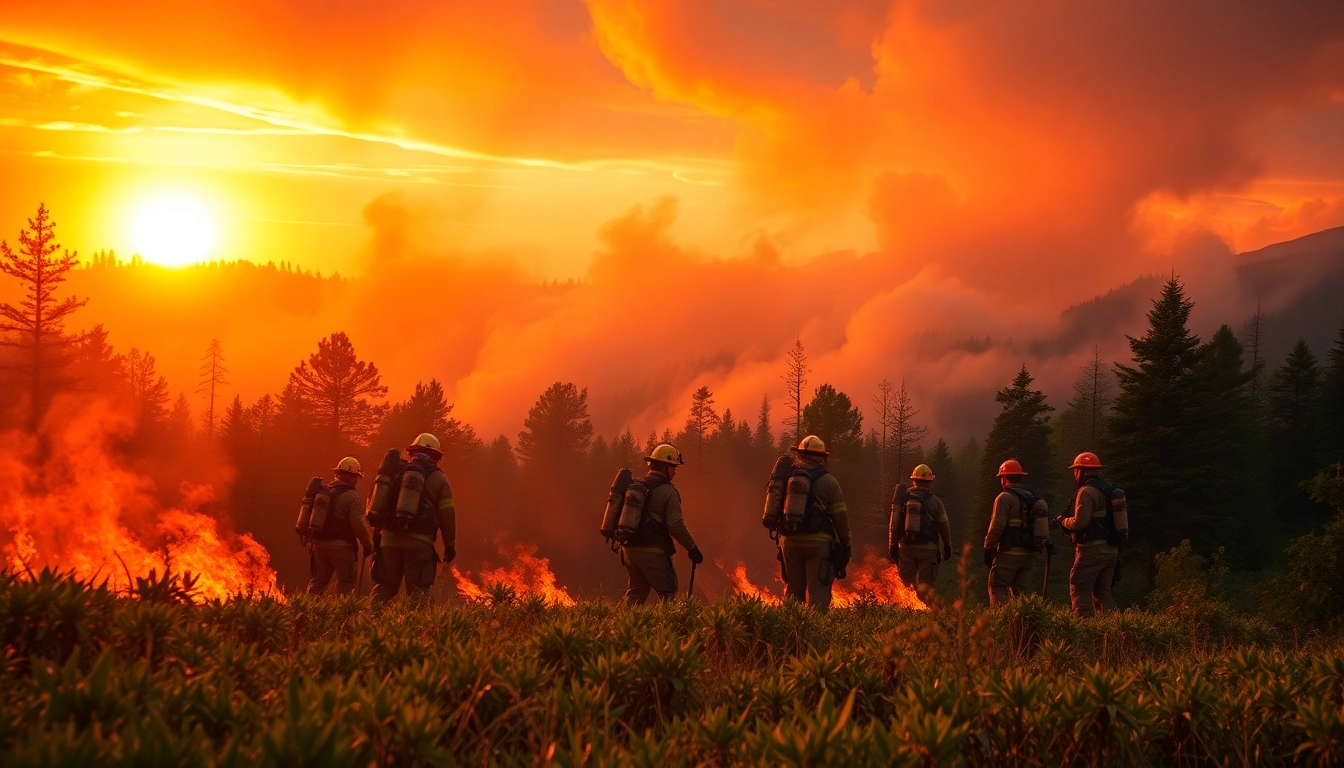Introduction to Wildfire Events
Wildfires have grown to be an increasingly pressing environmental concern, notably impacting our ecosystems, air quality, and communities. Understanding the nuances surrounding wildfire events is vital for effective management and response. With changing weather patterns, increased human activity, and climatic shifts, the frequency and severity of these incidents have surged. This article aims to provide comprehensive insights into the nature of wildfires, their causes, implications, and strategies for prevention and management.
Definition and Importance of Wildfires
A wildfire is defined as an uncontrolled fire that spreads rapidly, fueled by dry conditions and vegetation. Wildfires play a complex role in many ecosystems; they can rejuvenate landscapes, promote biodiversity, and contribute to the natural cycle of growth and decay. However, these flames, when unchecked, pose significant threats to lives, properties, and natural habitats, emphasizing the need for sound fire management strategies.
Types of Wildfire Events
Wildfires can be categorized based on various factors, including their behavior, the environment, and their causes. The three primary types are:
- Surface Fires: These are the most common type of wildfires, burning along the forest floor and primarily consuming grass, shrubs, and small trees.
- Crown Fires: These fires burn in the canopy of trees and can spread rapidly in forested areas. They are often driven by strong winds and can be extremely destructive.
- Ground Fires: These fires occur below the surface in the organic layer of soil, often smoldering for extended periods. They can be particularly challenging to detect and extinguish.
Historical Context and Recent Trends
Historically, wildfires have been a part of many ecosystems. Indigenous peoples often used fire as a land management tool. In recent decades, however, the landscape of wildfire events has shifted dramatically. Research indicates that climate change poses increasing risks, leading to longer fire seasons and more intense fires. For instance, the 2020 wildfire season in California was one of the most devastating on record, indicating a trend that is likely to persist if proactive measures are not implemented.
The Science Behind Wildfires
Fuel, Weather, and Topography
The spread and intensity of wildfires depend heavily on three primary factors: fuel, weather, and topography. Fuels consist of various vegetative materials, and their moisture content and arrangement can significantly affect fire behavior. Weather conditions, such as temperature, humidity, and wind speed, play crucial roles in fire ignition and propagation. Lastly, the topography, including landscape features like slopes and valleys, influences fire movement and intensity.
The Role of Climate Change in Wildfire Events
Climate change is a significant driver of increased wildfire activity. Warming temperatures, altered precipitation patterns, and extended dry seasons contribute to more susceptible conditions for wildfires. According to the Intergovernmental Panel on Climate Change (IPCC), these changes have resulted in a notable increase in the frequency of significant wildfire events across the globe, especially in forested regions. A successful approach to reducing wildfires must consider and adapt to these climatic changes.
Ecological Impact of Wildfires
While wildfires can have devastating effects, they also contribute positively to ecological processes. They promote nutrient cycling, support certain plant species that rely on fire for germination, and create diverse habitats for various wildlife. However, the balance is delicate; frequent and intense wildfires can lead to soil degradation, loss of biodiversity, and the disruption of entire ecosystems.
Strategies for Wildfire Prevention
Community Preparedness Initiatives
One of the most effective strategies for wildfire prevention is community preparedness. This involves educating residents about wildfire risks and urging them to take appropriate measures, such as creating defensible spaces around homes, following local fire regulations, and being prepared with evacuation plans. Communities can foster a culture of awareness and proactivity through workshops and training sessions focused on wildfire management.
Firebreaks and Fuel Management Techniques
Establishing firebreaks and managing fuels are crucial in wildfire prevention. Firebreaks are strategically cleared and maintained areas designed to slow or stop the advance of a wildfire. On the other hand, fuel management techniques, such as controlled burns and selective logging, can help reduce the volume of combustible materials, thereby lessening the fire’s intensity.
Education and Awareness Programs
Education and community engagement programs are essential for reducing wildfire risks. State and local agencies should invest in awareness campaigns that inform the public about fire danger ratings, safe outdoor activities, and the responsible use of fire. Increased understanding often leads to more active participation in preventive measures and community initiatives.
Responding to Wildfire Events
Incident Command Systems and Coordination
A critical component of effective wildfire response is the Incident Command System (ICS), which provides a standardized organizational structure for managing wildfire incidents. This system allows for the efficient allocation of resources and coordination among various agencies, including local fire departments, state resources, and federal teams. Clear communication and well-defined roles are fundamental to a successful wildfire response.
Technological Innovations in Firefighting
Advancements in technology have greatly improved firefighting capabilities. Drones equipped with thermal imaging cameras assist in locating hot spots during active fires. Additionally, geographic information systems (GIS) are invaluable for analyzing fire spread and planning fire response strategies. Innovations like these enhance operational efficiency and improve safety for fire responders.
Post-Fire Recovery Efforts
Recovering from wildfire events involves several measures aimed at restoring affected areas. Post-fire rehabilitation may include replanting trees, restoring habitat, and revising land-use policies to mitigate future risks. Engaging local communities in recovery efforts fosters resilience and promotes long-term ecological and social recovery.
Future of Wildfire Management
Emerging Research and Best Practices
Research is vital for enhancing wildfire management strategies. Emerging studies focus on understanding fire behavior patterns, evaluating the effectiveness of various firefighting tactics, and developing climate-resilient practices. Best practices, derived from successful case studies and ongoing research, can guide land management efforts and promote sustainable practices mitigating wildfire risks.
Collaboration between Agencies and Communities
Effectively managing wildfires requires collaboration across multiple entities—federal, state, and local agencies must work in conjunction with community groups and residents. Joint initiatives, knowledge sharing, and resource pooling enhance preparedness and response capabilities while fostering a culture of shared responsibility towards wildfire management.
Legislative and Policy Changes in Wildfire Management
Adapting legislation and policies is essential for improving wildfire management frameworks. Governments need to assess current policies, adapt funding mechanisms for fire management, and implement stricter regulations for land use in wildland urban interfaces. Proactive policies regarding forest health and land management can help build resilience against future wildfire events.








